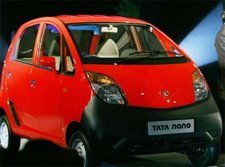 Nobody can dispute that degree to which India has undergone political & economic reform. A question remains though as to whether these will translate into true economic growth, productivity improvements and innovation.
Nobody can dispute that degree to which India has undergone political & economic reform. A question remains though as to whether these will translate into true economic growth, productivity improvements and innovation.
When the economy was liberalised in the 1990s, India did away with the License Raj, an onerous & corrupt licensure system which mandated those businesses which could open in India’s planned economy. The openness has set the environment for a new generation of innovators to surface, but where are they?
 There are numerous stories of Indian innovation emerging although their innovations are uniquely aligned to their emerging economy – which is a start contrast perhaps to what was seen in either Russia or China. The Tata Nano, the world’s cheapest car was recently announced at a price of only $US2500. The market in India alone is likely to be astronomical for this vehicle without even considering the rest of the world – and interestingly enough to date no-one is considering the rest of the world for this car.
There are numerous stories of Indian innovation emerging although their innovations are uniquely aligned to their emerging economy – which is a start contrast perhaps to what was seen in either Russia or China. The Tata Nano, the world’s cheapest car was recently announced at a price of only $US2500. The market in India alone is likely to be astronomical for this vehicle without even considering the rest of the world – and interestingly enough to date no-one is considering the rest of the world for this car.
Then there’s the $20 laptop aimed at providing distance learning across rural India.
 The Economist recently had an article on innovative practices in the health care industry in India. It compared care in developed countries and found that hospitals in India offer variable structures and health information technology to offer quick & affordable service – or at least are capable of doing that though the extent of it in practice is still open to some question.
The Economist recently had an article on innovative practices in the health care industry in India. It compared care in developed countries and found that hospitals in India offer variable structures and health information technology to offer quick & affordable service – or at least are capable of doing that though the extent of it in practice is still open to some question.
So there is innovation in India, we are seeing it. But with a country of so many people you frankly would expect more. In India there are only 115 R&D researchers per million people compared to 4482 in the US and 5198 in Japan. In India only 7000 patent applications were filed in 2004 vs 185000 in the US and 363000 in Japan.
Is it that the Indian psyche/culture is simply not inately innovative – perhaps but I don’t think so. More likely India needs to foster innovation. It needs to look at where the corruption still lay within the economic & political circles and free those up to allow the next generation of innovation.
India has proven its capacity to be a source of cheap labor, to be the place where the rest of the world outsources labor intensive tasks – somewhat like China. But India has proven already that its capable of being so much more. There is an inate ability there to find low cost solutions to design which goes beyond cheap labor. This needs to be fostered not only for India’s benefit but also for the rest of the world’s.



